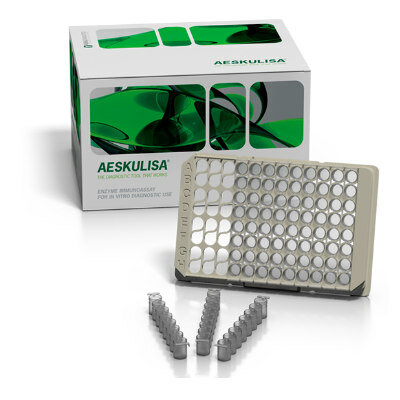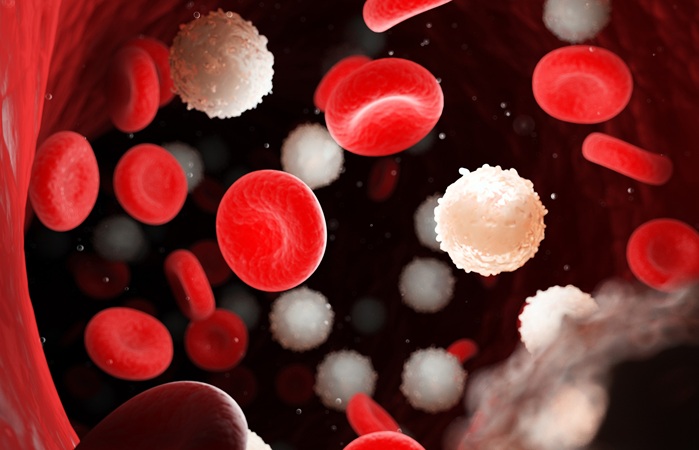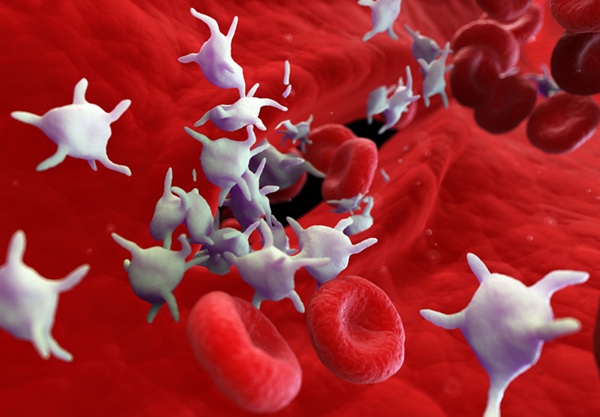Test Enables Quick Diagnosis for Rare Hormone Disorder
|
By LabMedica International staff writers Posted on 14 Aug 2018 |
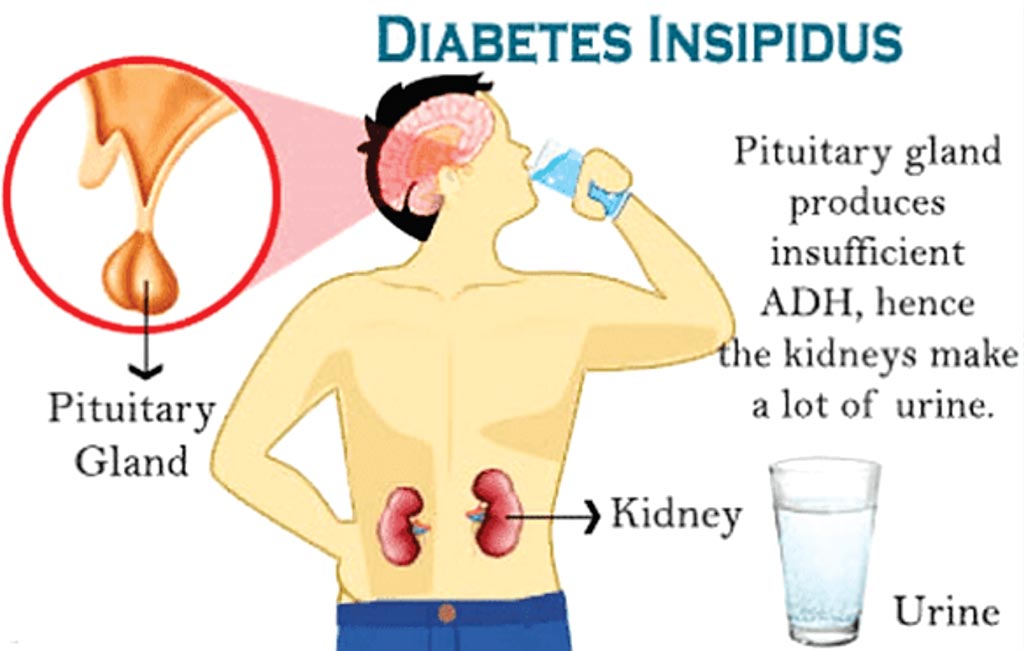
Image: A diagram of the causes of diabetes insipidus resulting from the lack of vasopressin (ADH) production in the hypothalamus or the pituitary gland (Photo courtesy of Maria Khatun Mona, RN).
The indirect water-deprivation test is the current reference standard for the diagnosis of diabetes insipidus. However, it is technically cumbersome to administer, and the results are often inaccurate.
Drinking more than three liters per day with the equivalent increase in urination is regarded as too much. This drinking by the liter is known as "polyuria-polydipsia syndrome" and usually develops over time through habit, or can be a side effect of a mental illness. In rare cases, however, it may be caused by diabetes insipidus.
Scientists collaborating with those at the University of Basel (Basel, Switzerland) recruited 156 patients with hypotonic polyuria at 11 medical centers to undergo both water-deprivation and hypertonic saline infusion tests from 2013 to 2017. In the latter test, plasma copeptin was measured when the plasma sodium level had increased to at least 150 mmol/L after infusion of hypertonic saline. The primary outcome was the overall diagnostic accuracy of each test as compared with the final reference diagnosis, which was determined on the basis of medical history, test results, and treatment response, with copeptin levels masked.
The final diagnosis was primary polydipsia in 82 patients (57%), central diabetes insipidus in 59 (41%), and nephrogenic diabetes insipidus in three (2%). Overall, among the 141 patients included in the analysis, the indirect water-deprivation test determined the correct diagnosis in 108 patients with a diagnostic accuracy of 76.6%, and the hypertonic saline infusion test (with a copeptin cutoff level of greater than 4.9 pmol/L determined the correct diagnosis in 136 patients (96.5%). The indirect water-deprivation test correctly distinguished primary polydipsia from partial central diabetes insipidus in 77 of 105 patients (73.3%), and the hypertonic saline infusion test distinguished between the two conditions in 99 of 104 patients (95.2%).
The distinction between what is considered a "harmless" primary polydipsia and a diabetes insipidus is crucial, as their therapy is fundamentally different. Diabetes insipidus must be treated with the hormone vasopressin (or ADH, the antidiuretic hormone), while patients with primary polydipsia require behavioral therapy to reduce their habitual drinking. A wrong therapy can have life-threatening consequences as treatment with vasopressin without indication can lead to water intoxication. The authors concluded that the direct measurement of hypertonic saline–stimulated plasma copeptin had greater diagnostic accuracy than the water-deprivation test in patients with hypotonic polyuria. The study was published on August 2, 2018, in The New England Journal of Medicine.
Related Links:
University of Basel
Drinking more than three liters per day with the equivalent increase in urination is regarded as too much. This drinking by the liter is known as "polyuria-polydipsia syndrome" and usually develops over time through habit, or can be a side effect of a mental illness. In rare cases, however, it may be caused by diabetes insipidus.
Scientists collaborating with those at the University of Basel (Basel, Switzerland) recruited 156 patients with hypotonic polyuria at 11 medical centers to undergo both water-deprivation and hypertonic saline infusion tests from 2013 to 2017. In the latter test, plasma copeptin was measured when the plasma sodium level had increased to at least 150 mmol/L after infusion of hypertonic saline. The primary outcome was the overall diagnostic accuracy of each test as compared with the final reference diagnosis, which was determined on the basis of medical history, test results, and treatment response, with copeptin levels masked.
The final diagnosis was primary polydipsia in 82 patients (57%), central diabetes insipidus in 59 (41%), and nephrogenic diabetes insipidus in three (2%). Overall, among the 141 patients included in the analysis, the indirect water-deprivation test determined the correct diagnosis in 108 patients with a diagnostic accuracy of 76.6%, and the hypertonic saline infusion test (with a copeptin cutoff level of greater than 4.9 pmol/L determined the correct diagnosis in 136 patients (96.5%). The indirect water-deprivation test correctly distinguished primary polydipsia from partial central diabetes insipidus in 77 of 105 patients (73.3%), and the hypertonic saline infusion test distinguished between the two conditions in 99 of 104 patients (95.2%).
The distinction between what is considered a "harmless" primary polydipsia and a diabetes insipidus is crucial, as their therapy is fundamentally different. Diabetes insipidus must be treated with the hormone vasopressin (or ADH, the antidiuretic hormone), while patients with primary polydipsia require behavioral therapy to reduce their habitual drinking. A wrong therapy can have life-threatening consequences as treatment with vasopressin without indication can lead to water intoxication. The authors concluded that the direct measurement of hypertonic saline–stimulated plasma copeptin had greater diagnostic accuracy than the water-deprivation test in patients with hypotonic polyuria. The study was published on August 2, 2018, in The New England Journal of Medicine.
Related Links:
University of Basel
Latest Clinical Chem. News
- ‘Brilliantly Luminous’ Nanoscale Chemical Tool to Improve Disease Detection
- Low-Cost Portable Screening Test to Transform Kidney Disease Detection
- New Method Uses Pulsed Infrared Light to Find Cancer's 'Fingerprints' In Blood Plasma
- Carbon Nanotubes Help Build Highly Accurate Sensors for Continuous Health Monitoring
- Paper-Based Device Boosts HIV Test Accuracy from Dried Blood Samples
- AI-Powered Raman Spectroscopy Method Enables Rapid Drug Detection in Blood
- Novel LC-MS/MS Assay Detects Low Creatinine in Sweat and Saliva
- Biosensing Technology Breakthrough Paves Way for New Methods of Early Disease Detection
- New Saliva Test Rapidly Identifies Paracetamol Overdose
- POC Saliva Testing Device Predicts Heart Failure in 15 Minutes

- Screening Tool Detects Multiple Health Conditions from Single Blood Drop
- Integrated Chemistry and Immunoassay Analyzer with Extensive Assay Menu Offers Flexibility, Scalability and Data Commutability
- Rapid Drug Test to Improve Treatment for Patients Presenting to Hospital
- AI Model Detects Cancer at Lightning Speed through Sugar Analyses
- First-Ever Blood-Powered Chip Offers Real-Time Health Monitoring
- New ADLM Guidance Provides Expert Recommendations on Clinical Testing For Respiratory Viral Infections
Channels
Molecular Diagnostics
view channel
Blood Test Could Predict Relapse of Autoimmune Blood Vessel Disease
Neutrophils, once believed to be uniform in nature, have been discovered to exhibit significant diversity. These immune cells, which play a crucial role in fighting infections, are also implicated in autoimmune... Read more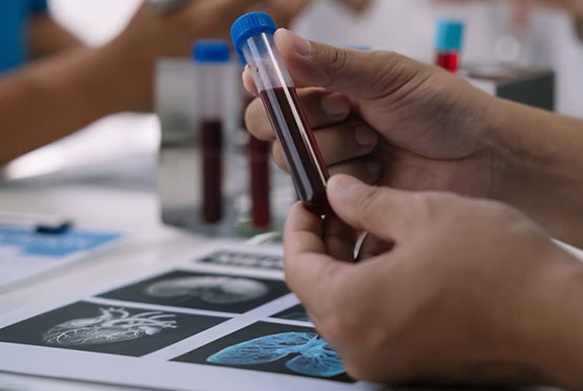
First-of-its-Kind Blood Test Detects Trauma-Related Diseases
In today’s fast-paced world, stress and trauma have unfortunately become common experiences for many individuals. Continuous exposure to stress hormones can confuse the immune system, causing it to misinterpret... Read moreHematology
view channel
New Scoring System Predicts Risk of Developing Cancer from Common Blood Disorder
Clonal cytopenia of undetermined significance (CCUS) is a blood disorder commonly found in older adults, characterized by mutations in blood cells and a low blood count, but without any obvious cause or... Read more
Non-Invasive Prenatal Test for Fetal RhD Status Demonstrates 100% Accuracy
In the United States, approximately 15% of pregnant individuals are RhD-negative. However, in about 40% of these cases, the fetus is also RhD-negative, making the administration of RhoGAM unnecessary.... Read moreImmunology
view channel
Stem Cell Test Predicts Treatment Outcome for Patients with Platinum-Resistant Ovarian Cancer
Epithelial ovarian cancer frequently responds to chemotherapy initially, but eventually, the tumor develops resistance to the therapy, leading to regrowth. This resistance is partially due to the activation... Read more
Machine Learning-Enabled Blood Test Predicts Immunotherapy Response in Lymphoma Patients
Chimeric antigen receptor (CAR) T-cell therapy has emerged as one of the most promising recent developments in the treatment of blood cancers. However, over half of non-Hodgkin lymphoma (NHL) patients... Read moreMicrobiology
view channel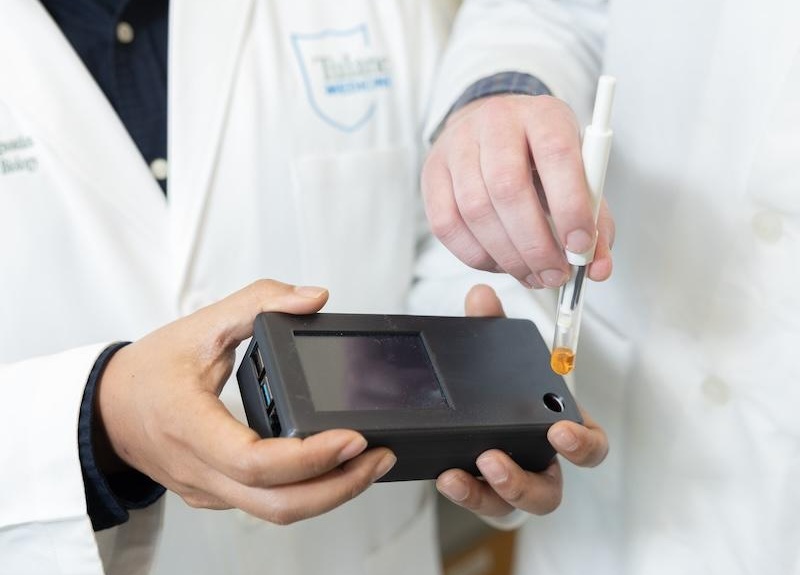
Handheld Device Delivers Low-Cost TB Results in Less Than One Hour
Tuberculosis (TB) remains the deadliest infectious disease globally, affecting an estimated 10 million people annually. In 2021, about 4.2 million TB cases went undiagnosed or unreported, mainly due to... Read more
New AI-Based Method Improves Diagnosis of Drug-Resistant Infections
Drug-resistant infections, particularly those caused by deadly bacteria like tuberculosis and staphylococcus, are rapidly emerging as a global health emergency. These infections are more difficult to treat,... Read more
Breakthrough Diagnostic Technology Identifies Bacterial Infections with Almost 100% Accuracy within Three Hours
Rapid and precise identification of pathogenic microbes in patient samples is essential for the effective treatment of acute infectious diseases, such as sepsis. The fluorescence in situ hybridization... Read morePathology
view channel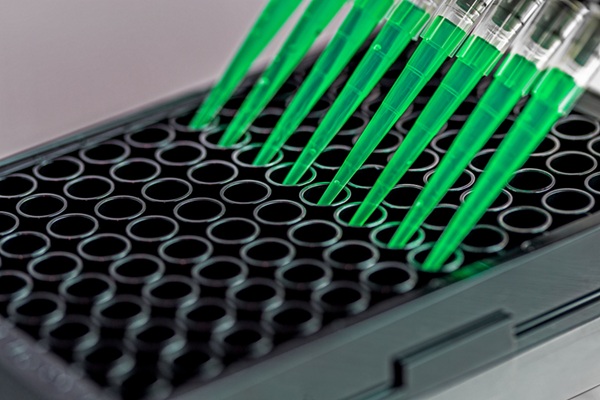
Sensitive and Specific DUB Enzyme Assay Kits Require Minimal Setup Without Substrate Preparation
Ubiquitination and deubiquitination are two important physiological processes in the ubiquitin-proteasome system, responsible for protein degradation in cells. Deubiquitinating (DUB) enzymes contain around... Read more
World’s First AI Model for Thyroid Cancer Diagnosis Achieves Over 90% Accuracy
Thyroid cancer is one of the most common cancers worldwide, and its precise management typically relies on two primary systems: (1) the 8th edition of the American Joint Committee on Cancer (AJCC) or ... Read more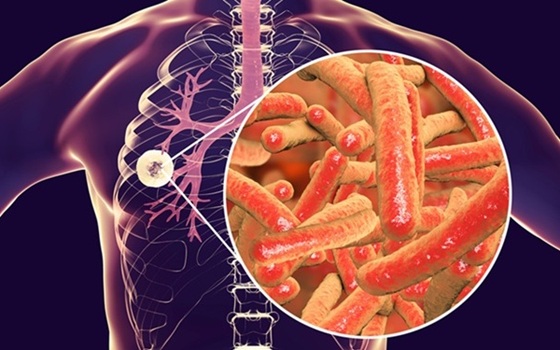
Breakthrough Diagnostic Approach to Significantly Improve TB Detection
Tuberculosis (TB) remains the deadliest infectious disease globally, with 10.8 million new cases and 1.25 million deaths reported in 2023. Early detection through effective screening is crucial in identifying... Read more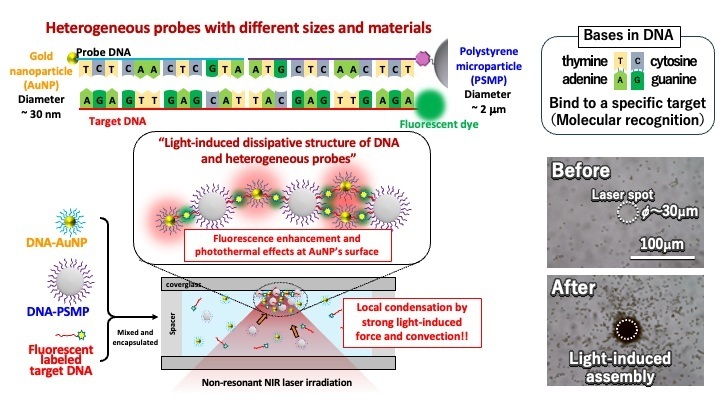
Rapid, Ultra-Sensitive, PCR-Free Detection Method Makes Genetic Analysis More Accessible
Genetic testing has been an important method for detecting infectious diseases, diagnosing early-stage cancer, ensuring food safety, and analyzing environmental DNA. For a long time, polymerase chain reaction... Read moreTechnology
view channel
Disposable Microchip Technology Could Selectively Detect HIV in Whole Blood Samples
As of the end of 2023, approximately 40 million people globally were living with HIV, and around 630,000 individuals died from AIDS-related illnesses that same year. Despite a substantial decline in deaths... Read more
Pain-On-A-Chip Microfluidic Device Determines Types of Chronic Pain from Blood Samples
Chronic pain is a widespread condition that remains difficult to manage, and existing clinical methods for its treatment rely largely on self-reporting, which can be subjective and especially problematic... Read more
Innovative, Label-Free Ratiometric Fluorosensor Enables More Sensitive Viral RNA Detection
Viruses present a major global health risk, as demonstrated by recent pandemics, making early detection and identification essential for preventing new outbreaks. While traditional detection methods are... Read moreIndustry
view channel
Cepheid and Oxford Nanopore Technologies Partner on Advancing Automated Sequencing-Based Solutions
Cepheid (Sunnyvale, CA, USA), a leading molecular diagnostics company, and Oxford Nanopore Technologies (Oxford, UK), the company behind a new generation of sequencing-based molecular analysis technologies,... Read more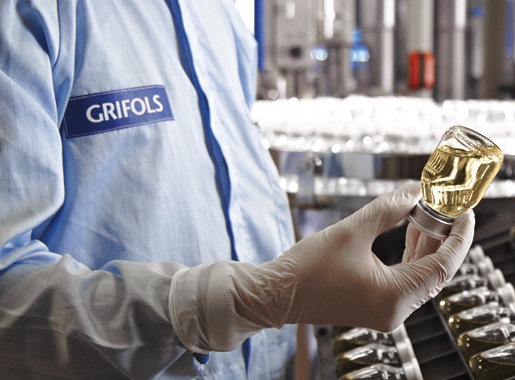
Grifols and Tecan’s IBL Collaborate on Advanced Biomarker Panels
Grifols (Barcelona, Spain), one of the world’s leading producers of plasma-derived medicines and innovative diagnostic solutions, is expanding its offer in clinical diagnostics through a strategic partnership... Read more









